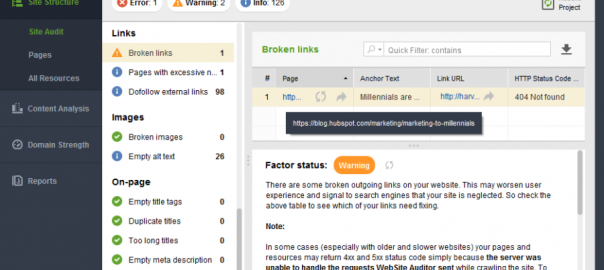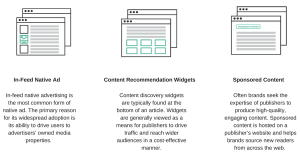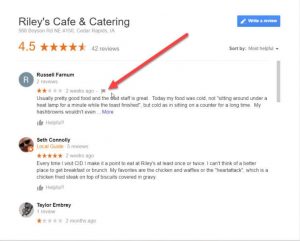— August 9, 2017
For years now, backlinks remain one of the main ranking factors in the eyes of Google – you’ll get to know that from nearly any ‘X top ranking factors’ article on the web. Along with that, worthy link-building techniques and methods have been quite a controversial topic for a long time. While Google relies on the backlinks pointing to your pages to evaluate their ‘popularity’ and topical relevance of your site, it is also getting quite good at detecting all kinds of manipulations and unnatural/spammy links.
However, if you think of building links more as of earning them – you may come up with quite a lot of white-hat and worthy methods to try, and get a bunch of natural and relevant links in the end.
In this post, let’s consider the often neglected opportunities to get some nice backlinks, and the methods you may be missing out on, while you shouldn’t.
1. Link Reclamation For The Unlinked Brand Mentions
Sometimes you are just this close to having a backlink, but for some reason you don’t. This may be a nude brand mention: still nice, but would be a real delight with a link, right? Or an honest mistake: a misspelled link not actually leading to you, a link to the wrong/already non-existent page of yours, etc.
It may even be the case if you are doing your thing offline, and your consumers talk over their experience and refer to you online, but don’t really associate your brand with your actual website, to link to it on their own.
The best way not to miss out on such opportunities is to regularly monitor your brand mentions with a social media listening tool like Awario. The tool will find all the mentions of your brand (you can monitor possible misspellings as well) across the most major social networks and the web. It will also allow you to find the most prominent and exposed discussions, so that you could prioritize, and delicately request the links where they should be present.
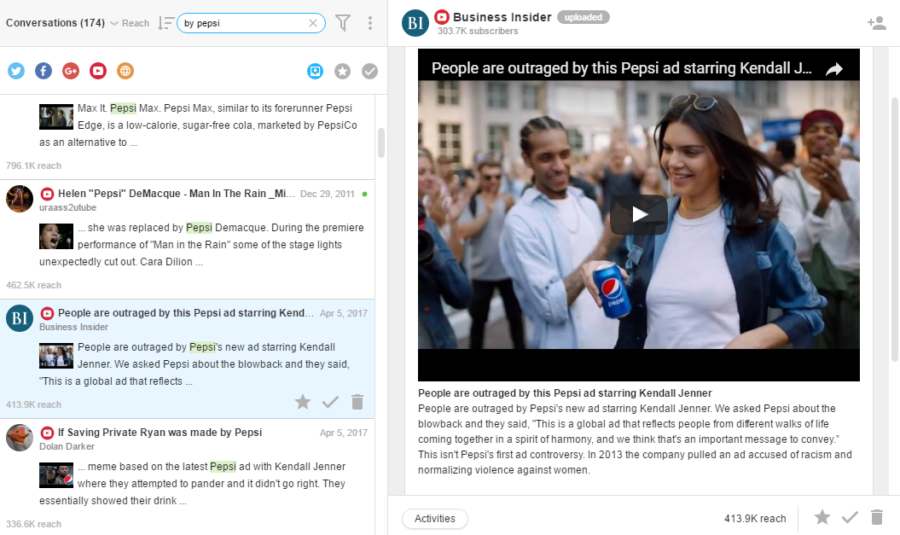
Apart from being delicate, make sure your requests are reasonable (if a user lists his favorite tools – don’t expect him to add a link to yours, while others are not linked to), and start with discussions where the sentiment around your brand is most positive.
2. Broken Link Building
This is another way to earn a link making both sides win. Basically, it is the process of finding the niche-relevant sites, or sites that are likely to cover the industry/topic, and then checking if they have any broken links to some content you can replace with yours (become a great fit and actually solve an issue for a website owner).
The most straightforward method to find the suitable prospects – is to google your keywords and find the content ranking well for them, and then detect the resources that are likely to link to such content. You can use some helpful search operators like “keyword” intitle:resources or “keyword” intitle:recommended to ease the process.
In most cases you’d like to narrow the list of websites down to qualitative, relevant and, preferably, non-commercial not to waste your efforts. And once you have the list of websites at hand – you can use WebSite Auditor to quickly run an audit for each. Simply create a project for a potential prospect, let the tool crawl the site for a few moments and get the complete list of all the broken links along with their sources.
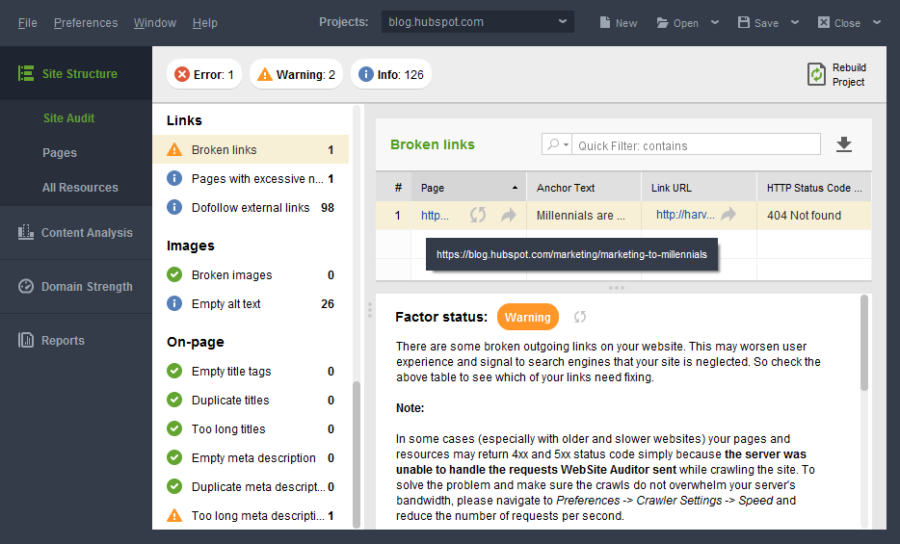
Analyze both, and target the pages where a link to your content would be as relevant (and somewhat valuable for the website owner), and reach out with an irresistible proposal.
3. Creating Cornerstone Content Assets, Which Grow Their Own Links
Pretend as if backlinks would grow on trees – you can actually get close to that by creating evergreen content assets that have a high referring potential.
You can create a really cool infographic or a useful cheat-sheet and sum up something that is regularly discussed by your community – chances are that it would be growing its own links organically. A more time- and resource-demanding option is to conduct a study or a research that everyone would be happy to refer to in their content.
You can also go for storytelling – a real case study is way more likely to encourage the audience for discussion than any made up theoretical guide, and the real experience would be more worth sharing.
Finally, you can create webinars or provide downloadables or printables along with your content. For instance, if you create a local guide for a neighborhood – a PDF with a map and key places would be a great addition to your post; if you offer home moving services – a handy shareable thing would be a check-list of things to pack first.
4. PR-Based Methods
A one more good idea is to join your PR and SEO forces for a thoughtful link-building strategy. Basically, the routine seems quite alike – at some point, both activities presuppose reaching out to bloggers and journalists, pitching news outlets, building relationships with publishers and influencers, etc. However, the main purpose of PR is to gain publicity, raise brand awareness and to build relationships in the industry. So PR-based approach can let you go far beyond just getting a link, while helping you find great new opportunities.
The idea that lies on the surface is to interview influencers/industry experts, or to get interviewed. You shouldn’t underestimate the efforts it may take though: it`s all about preparation, and you should research the background of each potential prospect to come up with the right pitch and questions. Same way, you should have great value to offer to persuade an influencer to get to know your background and to interview you.
The other way to benefit from PR activities in terms of SEO – is to create press-releases that would be newsworthy in the eyes of publishers. Just reposting the same ones to various directories would be a poor move, but if you find a hot topic and offer a fresh outlook on it – you can attract the attention and gain some good links.
Crowdsourced posts and expert roundups are another catchy kind of content that can earn you great links. If you manage to get the experts’ opinion on a hyped or just frequently discussed topic – you can create a piece that everyone (including the reputable experts!) would enjoy reading, sharing and linking to. Just have a look at Robbie Richard’s well-known post gathering the experts’ advice on SEO tools – 3,8K shares is what you are going to see there.

5. Legitimate Paid Methods
Getting paid links is, perhaps, the most hushed up and yet hyped topic when it comes to link-building. According to Google’s guidelines – any link or post that show any evidence of being paid (exchanged for goods, etc.) can cause you a penalty, so there are lots of factors to consider prior to taking the risk.
Obviously, getting paid links totally shouldn’t be the main or the only strategy you stick to. You should also be really picky in terms of the quality, quantity and even timing – if the website is new, you should start with earning links through building relationships and connections, and acquiring them naturally first. If you decide to go for paid links later, you should stick to a reasonable schedule to be on a presumably safe side. Surely, you should avoid the common no-no’s like link farms, fiverr links, spammy domains or domains overstuffed with adds and outgoing links.
While getting paid links is a tactic no SEO expert would openly recommend, there are still several wise ways to go about it. The best scenario would be to get a reputable review and, ideally, acquire a link with no ‘sponsored’ remark. To look for prospects for that matter you would simply look for portals and experts who are likely to review products like yours, and who do that decently. You can use a tool like Awario again to find the influencers; also, a good idea would be to gather your competitors and have a closer look at their existing backlink profiles to uncover their sources, proven to work.
The other well-known approach is sponsorship: it mostly comes along with PR benefits, but can also gain you some worthy links. Here`s an example: a PayPal-owned company Braintree is one of the official sponsors of the TechCrunch Disrupt, which is a series of highly respected tech industry conferences. But apart from being mentioned on the list of sponsors, the company is also getting a regular coverage in TechCrunch news blog, looking all natural.
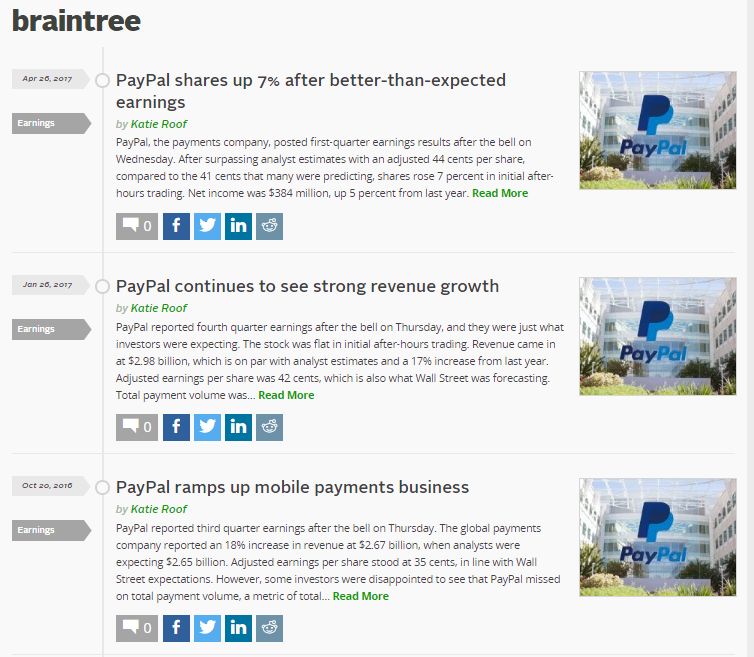
So, there are some ways to take advantage of such methods elegantly, if you’d be reasonable and wouldn’t neglect the part where you should still focus on building the relationships first.
Final Thoughts
With Google constantly keeping an eye on you, link-building is truly harsh at times. And the more sneaky methods and tactics widely come into use – the more of them attract attention and penalties. But if you approach link-building as ‘relationship-building’ in the first place and genuinely put some efforts into it – it really will pay off. Just don’t get tempted for easy ways, and think earning, not generating.
Digital & Social Articles on Business 2 Community
(73)
Report Post